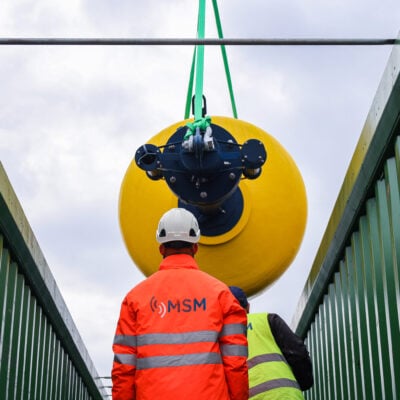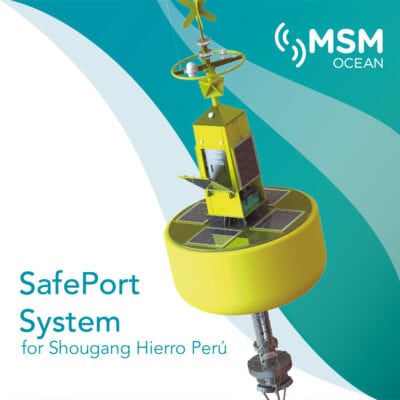
San Nicolás dock, located approximately 530 km along the Peruvian coast south of Lima, is a special port facility managed by the company Shougang Hierro Perú S.A.A. This dock required a comprehensive real-time measurement system for meteorological and oceanographic parameters affecting navigation in order to make agile and reliable decisions on whether to close or open port operations.

This project was developed within the framework of an initiative led by the Directorate of Hydrography and Navigation of the Peruvian Navy, together with the National Port Authority, in collaboration with the Port Captaincies and the companies managing port facilities, as is the case with Shougang Hierro Perú S.A.A. This initiative aims to enable more efficient management of ports along the Peruvian coast while simultaneously feeding a national database by transmitting relevant data to the competent authorities. In fact, the Ocean-Meteorological Monitoring System for opening and closing the San Nicolás dsock has been the first project developed and implemented as part of this initiative.
Challenges
The San Nicolás dock needed to measure a series of parameters in order to analyse navigation conditions when approaching the port. Therefore, it was decided to install an instrumented buoy in San Nicolás Bay to measure the following data:
- Wind speed and direction.
- Wind Gusts speed and direction.
- Wave height, direction, and period.
- Surface and water column current speed and direction.
Additionally, a dual communication strategy was established:
- Directed bidirectional communication: to the Shougang Control Center for receiving meteorological, oceanographic, and operational data from the buoy (status and alarms), as well as for operational control commands of the buoy through AIS communications with redundancy via mobile phone.
- Broadcast communication: for vessels in the area using AIS Message #8 for meteorological and oceanographic data.

Solution
MSM Ocean conducted the necessary studies and configured a Smart Port System consisting of:
- An EBM20-OC elastomer buoy designed according to IALA Recommendations to ensure proper visibility and safety. It includes a solar power system with 375 W of solar panels and two 130 Ah batteries. This coastal buoy incorporates the necessary equipment for data measurement and transmission.
- A series of sensors specifically selected for this project: a weather station, a wave sensor, and an ADCP (Acoustic Doppler Current Profiler) or current meter.
- An MMB03 datalogger, which captures measurements from the sensors, processes them, performs quality control on the data, and transmits them following the defined communication strategy.
- A series of equipment and software for the control center and data reception: a coastal AIS station, to receive AIS Message #8 and AIS Message #6 data, the OceanCom WEB Application for the operational management of the buoy, sensors, and data, and the VTS Ocean Application, which allows for AIS data visualization on a single screen.

Conclusion
Thanks to the Smart Port System designed by MSM Ocean, the San Nicolás dock has a monitoring system that collects ocean-meteorological data relevant to accurately and reliably verify navigation conditions, thereby optimizing port operations with complete safety. This also contributes to the inclusion of ocean-meteorological information in the Oceanographic Information System database of the Peruvian State.








